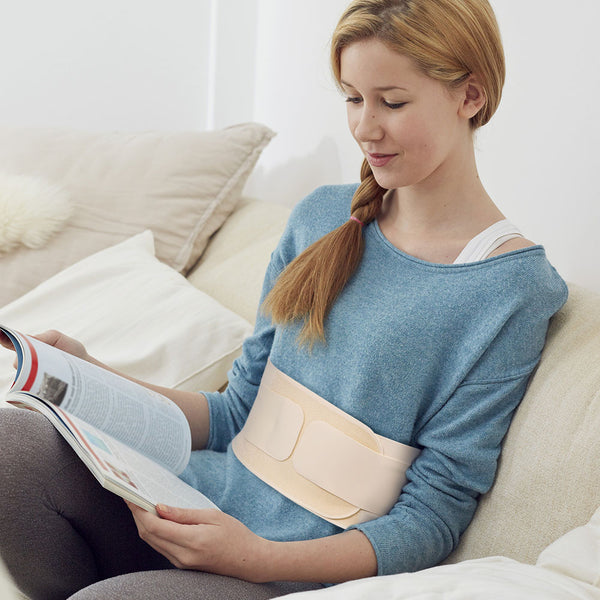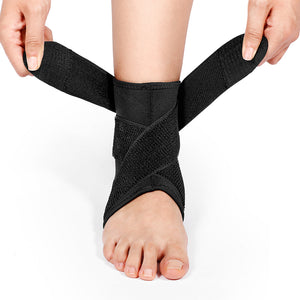How Long Does Lower Back Braces Take to Work

do not occur once; they usually develop with the time one wears them and how they are worn. The short-term effects can be felt within days, while the long-term recovery effects take weeks or even months of continuous use.
Initial Relief Effects
In the initial stages of use of lumbar braces, most wearers can immediately feel support and stability within a few minutes or even a few hours. The braces protect by limiting certain injurious motion of the spine and through the application of external pressure to reduce the loading on the muscles, which immediately relieves pain induced by improper activity or poor posture.
The brace provides stability in less than 30 minutes of wear and relieves the pressure on the lower back. The research published by the American Academy of Orthopaedic Surgeons states that immediately after the brace limits spinal activity, the spinal load can be reduced by 15% to 30%.
Reduction from the brace relieves sciatica by reducing the range of spinal movement, hence decreasing the stimulation of the nerves. A 2019 survey, through the International Journal of Pain, said that 72% of lower back pain patients experienced pain relief of 20% to 40% upon wearing a brace for 30 minutes, particularly for those with sedentary jobs.
Reduction of Muscle Load
This is attributed to the decrease in muscle burden, which usually occurs after a few days of wearing the orthosis. By stabilizing the lower back, the orthosis decreases spontaneous contractions of back muscles, hence decreasing local muscle fatigue and soreness, especially under frequent physical activities or long postures.

These help reduce core muscles' fatigue during physically demanding exercises, like weightlifting or running over very long distances. Therefore, this may prevent a variety of injuries. For instance, when worn during deadlifts, a brace can lessen muscle tension by about 25% to 30% and save the lower back.
Employees who must stay on their feet all day demonstrate less soreness in the lower back, especially after working for more than 8 hours a day, by wearing such a brace.
Mid-term Effects (2 to 4 Weeks)
Medium-term effects are the improvement seen following several weeks of continuous brace wear, particularly in patients undergoing rehabilitation training and athletes.
The the recovery process by gradually strengthening their muscles. In the Journal of Sports Rehabilitation in 2020, the brace combined with rehabilitation training allowed 70% of the patients to return to normal levels of activity in 4 weeks with injuries of the lumbar spine.
A study among patients with lumbar disc herniation pointed out that spine mobility after 4 weeks of wearing the brace was reduced by about 40% and therefore reduced the chance of recurrence. Among professional sportsmen, the use of the brace combined with strength training effectively increased core stability; the proportion of athletes who mentioned a significant improvement is about 80%.
Correction of Posture
Poor posture worsens the load on the lower back when one sits or stands for a very long period. The creates a positive effect in posture correction, helping users gradually develop correct posture habits.
It follows from the data of the Journal of Posture and Movement Science that in 2017, in office workers, this brace worn for 3 weeks managed to reduce spinal curvature by 15 degrees and improved stability while sitting by 30%.
This was similarly demonstrated in a 2017 study when office workers with long sitting hours showed a 40% decrease in poor sitting posture and a 30% reduction in lower back fatigue following 3 weeks use of the brace. In conjunction with the brace wear, correct exercises for the back muscles should be able to achieve healthy posture for a longer term.
Long-term Use (4 to12 Weeks)
Long-term use of braces (more than 4 weeks) can lead to lasting health benefits but should be combined with other rehabilitation methods.
Chronic Pain Management: An article that appeared in the Journal of Chronic Pain Management in 2021 stated that chronic lower back pain patients who used the brace experienced a recurrence rate of approximately 40%, with 85% of the patients showing a significant improvement in the quality of life.
Muscle Dependency Risk: Using it for more than 12 weeks can reduce some activities of the muscle by up to 40%. This is where reducing the usage appropriately is necessary to retain your muscles.
Recommended Frequencies: Wearing no more than for 4 hours a day, together with appropriate rehabilitation training, can result in an improved outcome of recovery results by 60%, according to 2022 data.
Effects in Fitness
Fitness enthusiasts and athletes have varying demands depending on the activity of heavy lifting and high-intensity workouts.
The lower back is usually under a lot of pressure, especially with exercise, which the brace helps alleviate spinal compression and allows minimizing the likelihood of injury. In fact, avoiding 15% to 20% of lower back pressure can have athletes completing an additional 10% of their training volume.
The does not limit the flexibility of movement and at the same time provides strong support; thus, users confidently can handle heavier weights. So runners, for example, find lightweight braces irreplaceable in long-distance running because they reduce fatigue and allow running for longer periods of time.
Effects of Different Types of Braces
There are several types of braces for various purposes. Rigid and soft braces have their particular uses, and proper selection and application can greatly affect success. When choosing protective gear, you should choose according to your condition and activity requirements, and consult a professional doctor if necessary.
Rigid Braces
Rigid braces are indicated for post-surgical rehabilitation and other conditions that require high support. However, rigid braces restrict movement of the spine and are usually applied in the management of severe spinal disorders, such as post-operative rehabilitation of the lumbar vertebrae. They can comfortably reduce spinal activity by 70% and reduce post-surgical pain.
Soft Braces
The soft braces are ideal for mild pains in the back and support daily activities; they soothe 15% to 20% of discomfort in the lower back.
















